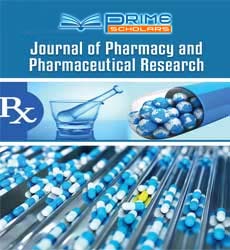Perspective - (2023) Volume 7, Issue 1
Antihypertensive Medications Demonstrate the Strongest Association with Melanoma
Jack Ishim*
Department of Pharmacy, University of Perth, Australia
*Correspondence:
Jack Ishim,
Department of Pharmacy, University of Perth,
Australia,
Email:
Received: 30-Jan-2023, Manuscript No. IPIPR-23-15850 ;
Editor assigned: 01-Feb-2023, Pre QC No. IPIPR-23-15850 (PQ);
Reviewed: 15-Feb-2023, QC No. IPIPR-23-15850 ;
Revised: 20-Feb-2023, Manuscript No. IPIPR-23-15850 (R);
Published:
27-Feb-2023, DOI: 10.21767/IPIPR.23.07.002
Introduction
Antihypertensive drugs are among the most commonly prescribed
drugs worldwide. Given its widespread use, many assumptions
have been made regarding its association with various malignancies,
including melanoma. Photosensitivity has been reported as an
adverse reaction to nearly all classes of antihypertensive drugs, initially
raised concerns about an increased risk of skin cancer. However,
the idea that cancers need a blood source to grow and that a
reduced vascular supply limits growth has given rise to the theory
that antihypertensive drugs might actually help treat cancer. Recent
experimental studies have improved our understanding of the
mechanism of action of common antihypertensive drugs. Many of
these drugs, such as beta-blockers, calcium channel blockers, and
diuretics, have targets that are not restricted to the cardiovascular
system instead, they often cross-react with receptors and channels
on cells throughout the body.
Description
Antihypertensive drugs can also affect immune cells. Several blood
pressure drugs have been proposed to stimulate immune system
cells, including B and T lymphocytes. This is theoretically beneficial
for immunogenic cancers like melanoma, which rely on natural killer
cells, dendritic cells, and T lymphocytes for immune surveillance.
Beta blockers work by blocking the action of epinephrine and norepinephrine
on their receptors. They are prescribed for a variety
of indications, including hypertension, congestive heart failure,
arrhythmias, and infantile hemangioma. There are limited studies
to help doctors determine whether this treatment can reduce the
risk of developing melanoma. In a large cohort of approximately 5
million Danish residents, neither atenolol nor sotalol use was associated
with an increased risk of developing cutaneous melanoma.
The Renin-Angiotensin System (RAS) is important in the regulation of blood pressure. Angiotensin-Converting Enzyme Inhibitors
(ACEI) prevents the conversion of angiotensin I to angiotensin II,
and Angiotensin Receptor Blockers (ARBs) selectively block the
binding of angiotensin II to angiotensin II receptors. These drugs
are most commonly used to treat hypertension, acute myocardial
infarction, heart failure, and diabetic nephropathy. However, given
the potential role of angiotensin II in melanoma progression, ACEIs
and ARBs have also been considered as potential antitumor agents.
Furthermore, both ACEIs and ARBs are associated with reduced
incidence of keratinocyte cancer, hypothesizing that these agents
may also reduce the risk of melanoma. To date, various population-
based studies and one randomized controlled trial have failed
to establish an association between melanoma and his exposure
to ACEIs or ARBs. However, short-term or high-intensity use of either
drug was not significantly associated with melanoma. Calcium
Channel Blockers (CCBs) are drugs that are widely used to treat various
cardiovascular diseases, including hypertension, angina pectoris,
and cardiac arrhythmias. They work by blocking the inward
movement of calcium by binding to specific types of voltage-gated
calcium channels having different affinities (dihydropyridines such
as amlodipine and nifedipine).
Conclusion
Although concerns have been raised that CCBs increase cancer risk,
epidemiological studies have found no association between this
class of drugs and melanoma incidence, melanoma recurrence,
or melanoma-related mortality. Furthermore, a randomized controlled
trial of hypertensive patients treated with CCB found no
significant change in melanoma risk. Although calcium signaling is
important in many immune cells, the use of CCB in combination
with immunotherapy has not been evaluated. Several experimental
studies have demonstrated the ability of CCB to influence the
immune system, particularly by interfering with T-cell function and
macrophage activation.
Citation: Ishim J (2023) Antihypertensive Medications Demonstrate the Strongest Association with Melanoma. J Pharm Pharm
Res. 07:002.
Copyright: © 2023 Ishim J. This is an open-access article distributed under the terms of the Creative Commons Attribution License,
which permits unrestricted use, distribution, and reproduction in any medium, provided the original author and source
are credited.

